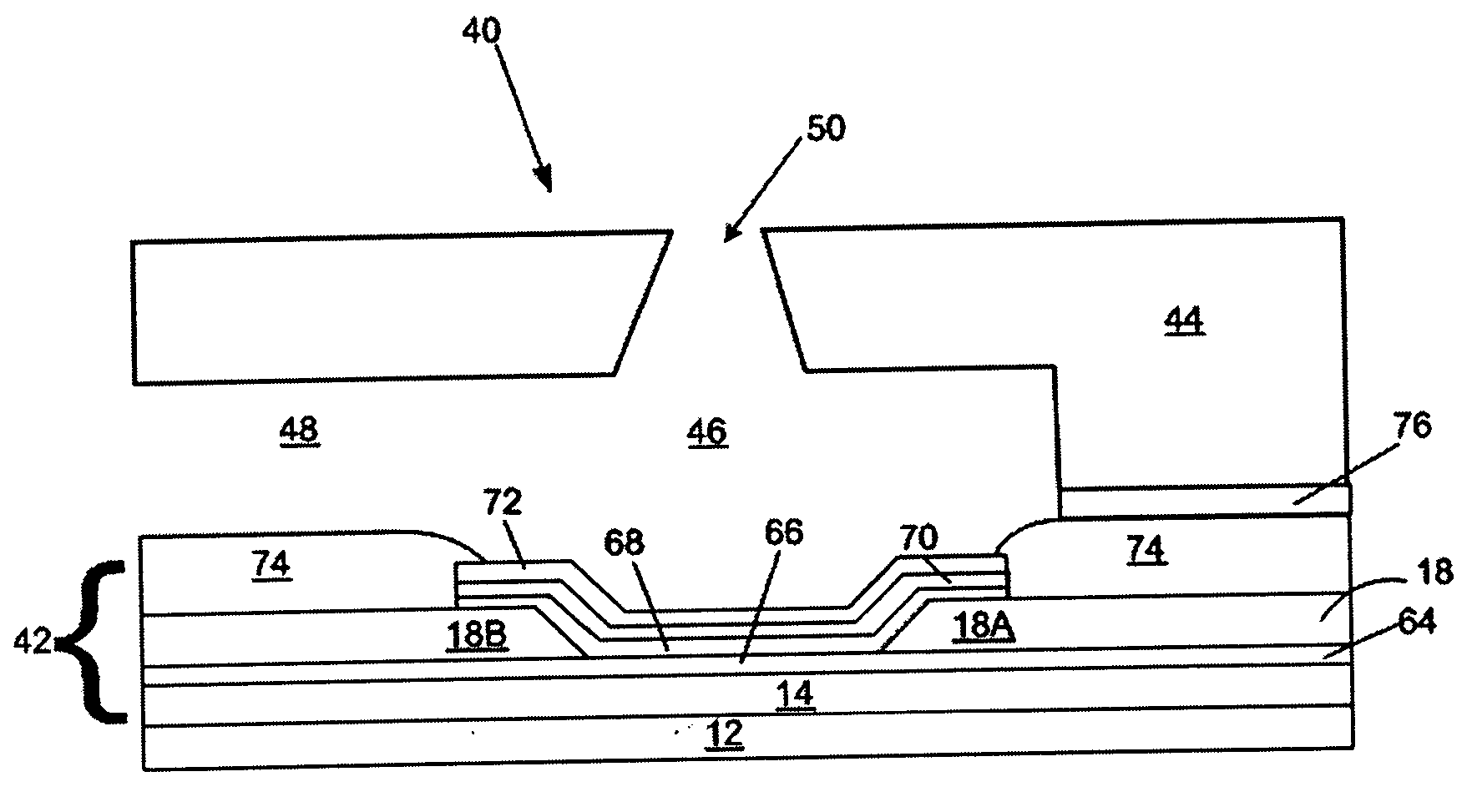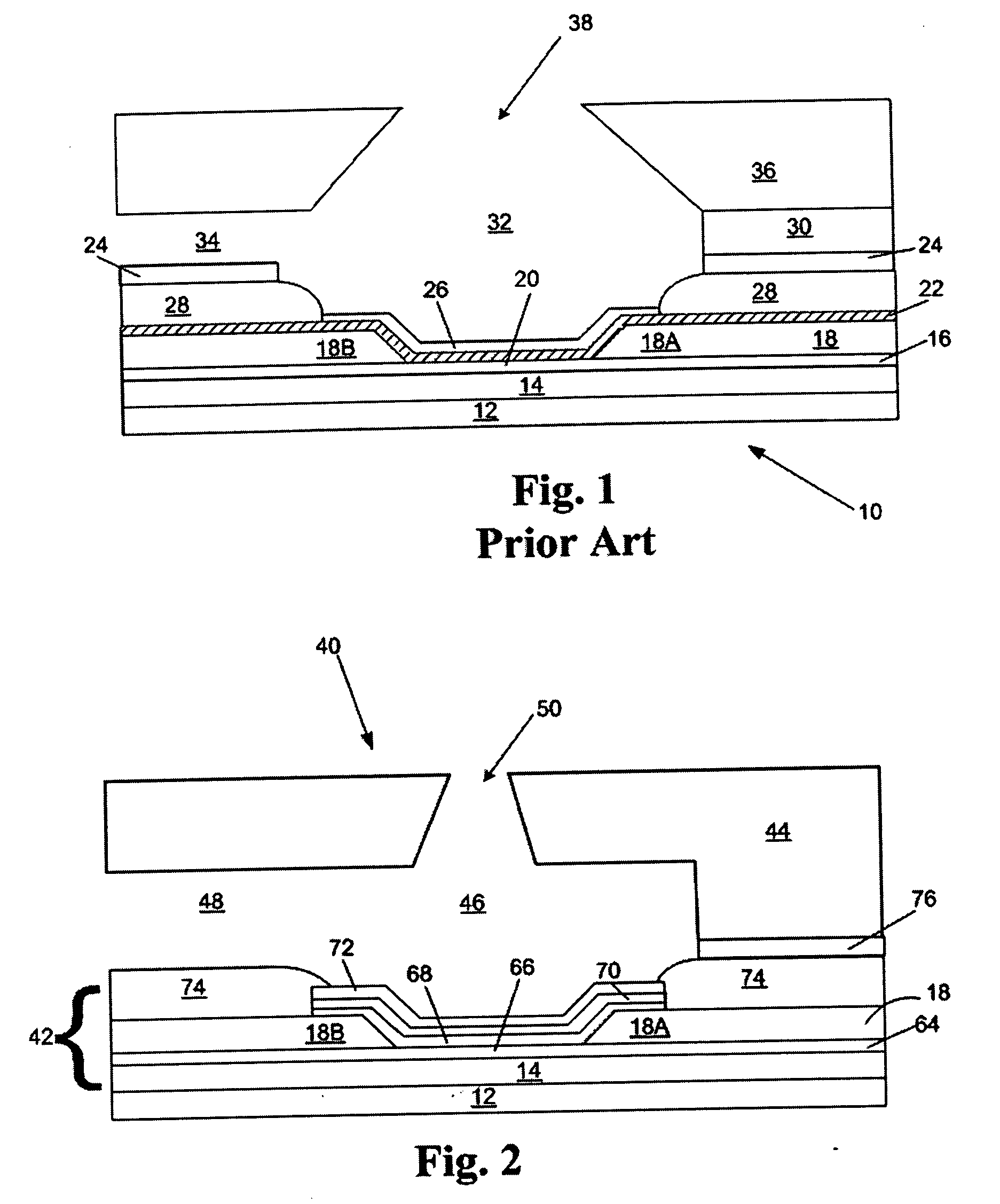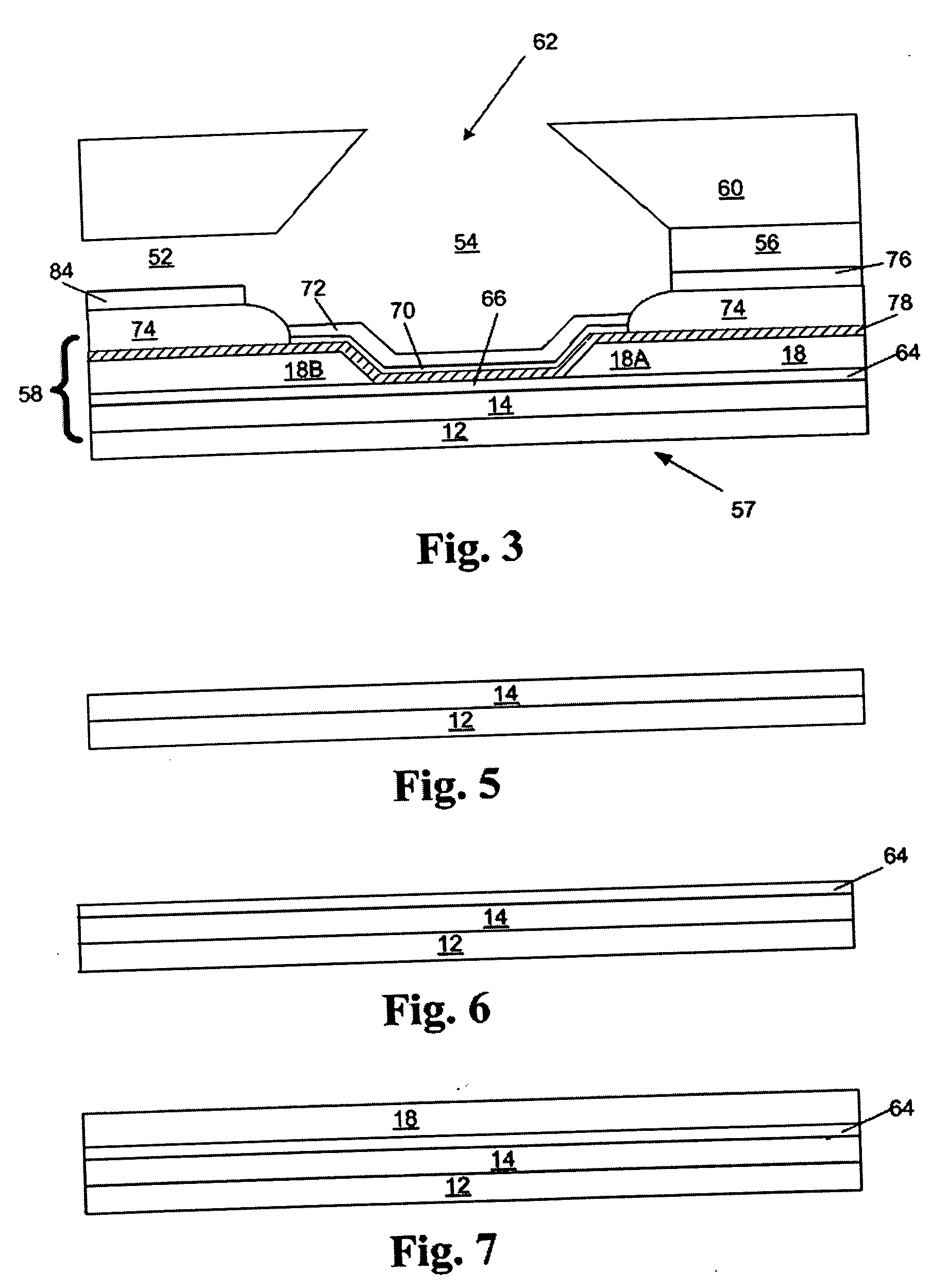Thin film ink jet printhead adhesion enhancement
- Summary
- Abstract
- Description
- Claims
- Application Information
AI Technical Summary
Benefits of technology
Problems solved by technology
Method used
Image
Examples
example
[0040] A 6 inch diameter silicon wafer was placed in a chemical vapor deposition chamber. In order to form a layer of Si-doped DLC on the silicon wafer, tetramethysilane gas was flowed into the chamber at 100 standard cubic centimeters per minute (sccm). Methane gas was also flowed into the chamber at 100 sccm. The chamber pressure was maintained at about 50 millTorrs. The RF power during the deposition process was 600 watts at an RF frequency of 13.6 Khz and the substrate bias voltage was 300 to 700 volts. The substrate was maintained at room temperature and the deposition rate for the process was 4200 Angstroms per minute. The Si-doped DLC layer was formed in about 30 seconds. The resulting Si-doped DLC had a film refractive index of 2.4 to 2.5 and a film stress of −5 to −7×109 dynes / cm2.
[0041] Upon completion of the formation of the Si-doped DLC layer, the methane gas flow was discontinued and the tetramethylsilane flow rate was decreased to 50 sccm. Nitrogen gas at a flow rate ...
PUM
 Login to View More
Login to View More Abstract
Description
Claims
Application Information
 Login to View More
Login to View More - R&D
- Intellectual Property
- Life Sciences
- Materials
- Tech Scout
- Unparalleled Data Quality
- Higher Quality Content
- 60% Fewer Hallucinations
Browse by: Latest US Patents, China's latest patents, Technical Efficacy Thesaurus, Application Domain, Technology Topic, Popular Technical Reports.
© 2025 PatSnap. All rights reserved.Legal|Privacy policy|Modern Slavery Act Transparency Statement|Sitemap|About US| Contact US: help@patsnap.com



